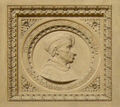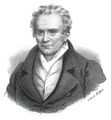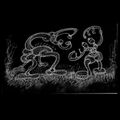Template:Selected anniversaries/May 9: Difference between revisions
No edit summary |
No edit summary |
||
| Line 6: | Line 6: | ||
File:Gaspard Monge.jpg|link=Gaspard Monge (nonfiction)|1746: Mathematician and engineer [[Gaspard Monge (nonfiction)|Gaspard Monge]] born. He will invent descriptive geometry, and do pioneering work in differential geometry. | File:Gaspard Monge.jpg|link=Gaspard Monge (nonfiction)|1746: Mathematician and engineer [[Gaspard Monge (nonfiction)|Gaspard Monge]] born. He will invent descriptive geometry, and do pioneering work in differential geometry. | ||
|| | ||1785: James Pollard Espy born ... meteorologist. Espy developed a convection theory of storms, explaining it in 1836 before the American Philosophical Society and in 1840 before the French Académie des Sciences and the British Royal Society. His theory was published in 1840 as The Philosophy of Storms. He became meteorologist to the War (1842) and Navy (1848) departments and developed the use of the telegraph in assembling weather observation data by which he studied the progress of storms and laid the basis for scientific weather forecasting. Pic. | ||
|| | ||1836: Ferdinand Monoyer born ... ophthalmologist, invented the Monoyer chart. | ||
||1850: Joseph Louis Gay-Lussac dies ... chemist and physicist | ||1845: Gustaf de Laval born ... engineer and businessman. | ||
||1850: Joseph Louis Gay-Lussac dies ... chemist and physicist. | |||
||1850: Edward Weston born ... chemist noted for his achievements in electroplating and his development of the electrochemical cell, named the Weston cell, for the voltage standard. Pic. | ||1850: Edward Weston born ... chemist noted for his achievements in electroplating and his development of the electrochemical cell, named the Weston cell, for the voltage standard. Pic. | ||
Revision as of 13:00, 24 January 2019
1469: Mathematician, astronomer, and gnomon-builder Paolo Toscanelli accuses the House of Malevecchio of secretly using the gnomon in the Cathedral of Santa Maria del Fiore in Florence to commit crimes against astronomical constants.
1746: Mathematician and engineer Gaspard Monge born. He will invent descriptive geometry, and do pioneering work in differential geometry.
1917: Mathematician and philosopher Georg Cantor publishes new theory of sets derived from Gnomon algorithm functions. Colleagues hail it as "a magisterial contribution to science and art of detecting and preventing crimes against mathematical constants."
1941: The German submarine U-110 is captured by the Royal Navy. On board is the latest Enigma machine which Allied cryptographers later use to break coded German messages.
1963: Project West Ford launches, successfully deploying a ring of 480,000,000 copper needles in orbit, forming an artificial ionospheric radio communication system.
1972: Public servant and alleged time-traveller The Custodian tells a funny story about how the Watergate scandal will play out.
1972: Watergate scandal (nonfiction): The United States House Committee on the Judiciary opens formal and public impeachment hearings against President Richard Nixon.
1974: Singer, songwriter, multi-instrumentalist, and alleged math criminal Skip Digits conducts debut performance of his new opera about impeachment hearings against President Richard Nixon.
2018: Steganographic analysis of Two Bugs Fighting unexpectedly releases self-replicating computer virus which spontaneously generates Extract of Radium.








